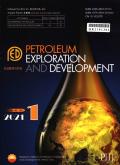Model construction and implementation of Ordos Energy Super Basin, NW China
IF 8
Q1 ENERGY & FUELS
引用次数: 0
Abstract
Taking the Ordos Basin as an example, this paper proposed that the construction of an energy super basin should follow the principle of “more energy, less carbon, and better energy structure”. The modeling workflow of energy super basin was built. Based on the resources/reserves, development status and infrastructures of the Ordos Basin, the development potential of the basin was evaluated, the uncertainties in the construction of energy super basin were analyzed, and the future vision and realization path of the Ordos Energy Super Basin were recommended. This study demonstrates that the Ordos Basin has the advantages of abundant energy sources, perfect infrastructures, well-matched carbon source and sink, small population density, and proximity to the energy consumption areas. These characteristics ensure that the Ordos Basin is a good candidate of the energy super basin. It is expected that the energy supply of the Ordos Basin in 2050 will reach 23×108 t of standard coal, and the proportion of fossil fuels in energy supply will decrease to 41%. The carbon emissions will decrease by 20×108 t compared to the emissions in 2023. The future construction of the basin should focus on the generation and storage of renewable energy, and technological breakthroughs for the carbon capture, utilization and storage.
鄂尔多斯能源超级盆地模型构建与实现
本文以鄂尔多斯盆地为例,提出能源超级盆地建设应遵循“多能源、少碳、优能源结构”的原则。建立了能源超级盆地建模工作流程。基于鄂尔多斯盆地的资源储量、开发现状和基础设施,评价了盆地的发展潜力,分析了能源超级盆地建设中的不确定因素,提出了鄂尔多斯能源超级盆地的未来愿景和实现路径。研究表明,鄂尔多斯盆地具有能源资源丰富、基础设施完善、碳源汇匹配、人口密度小、靠近能源消费区域等优势。这些特征决定了鄂尔多斯盆地是能源超级盆地的良好候选者。预计2050年鄂尔多斯盆地能源供应总量将达到23×108亿吨标准煤,化石燃料在能源供应中的比重将下降到41%。与2023年相比,碳排放量将减少20×108 t。未来流域建设应以可再生能源的发电和储存为重点,并在碳捕获、利用和储存方面取得技术突破。
本文章由计算机程序翻译,如有差异,请以英文原文为准。
求助全文
约1分钟内获得全文
求助全文

 求助内容:
求助内容: 应助结果提醒方式:
应助结果提醒方式:


